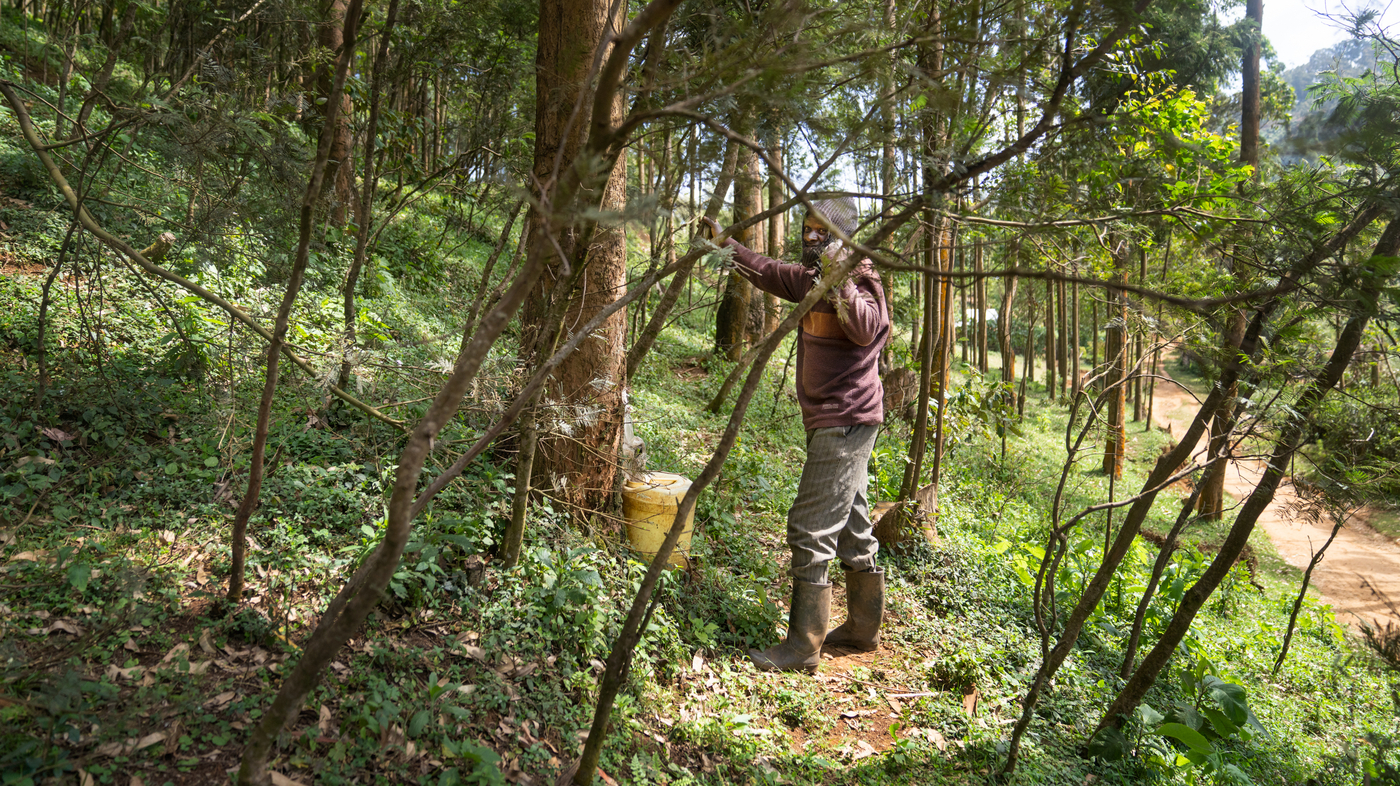LAARE, Kenya – Jacob Murungi and his wife don’t sleep much. Instead, they spend their nights in the local forest high in the mountains of central Kenya collecting water — from the trees.
“I’m out here all night, carrying full water containers to the house, putting empty ones out,” he says in Swahili.
It’s early morning, and Murungi is standing next to a towering tree. At its base rests a large yellow plastic jerrycan. A plastic sheet — discarded packaging taken from the trash and cleaned — is pinned to the bark of the tree using thorns from a nearby plant and then tucked into the jerrycan.
“At night when the mist comes, water forms on the tree. Then it rolls down the trunk, onto the plastic and into this container,” he explains, tapping the jerrycan.
This September morning, the air is cool. Murungi’s wearing a wool hat and a maroon fleece, long pants and tall rubber boots. But the sun — strong at the equator — will soon warm the area. When the ground heats up during the day, its moisture evaporates into the air. Then when the night brings cooler temperatures, that moisture condenses, forming a fog of water droplets that Murungi and his wife collect.
Finding water in many parts of Kenya is a struggle. The country is in the midst of its worst drought in decades. Rivers are drying up and the rainy season, once certain, has repeatedly failed to produce significant rainfall. Around the world, climate change is worsening drought conditions and limiting water access, leaving people searching for surprising sources, like fog and dew.
And while some of the methods for fog harvesting, like this one in the mountains, have been around for generations, scientists and entrepreneurs have been innovating new ways, including technology that can pull water from the air in practically any environment.
‘Poverty taught us this’
Murungi says on an average night, one tree can fill five jerrycans (more than 20 gallons) with this method. He says everyone in their small…
Read the full article here

Leave a Reply